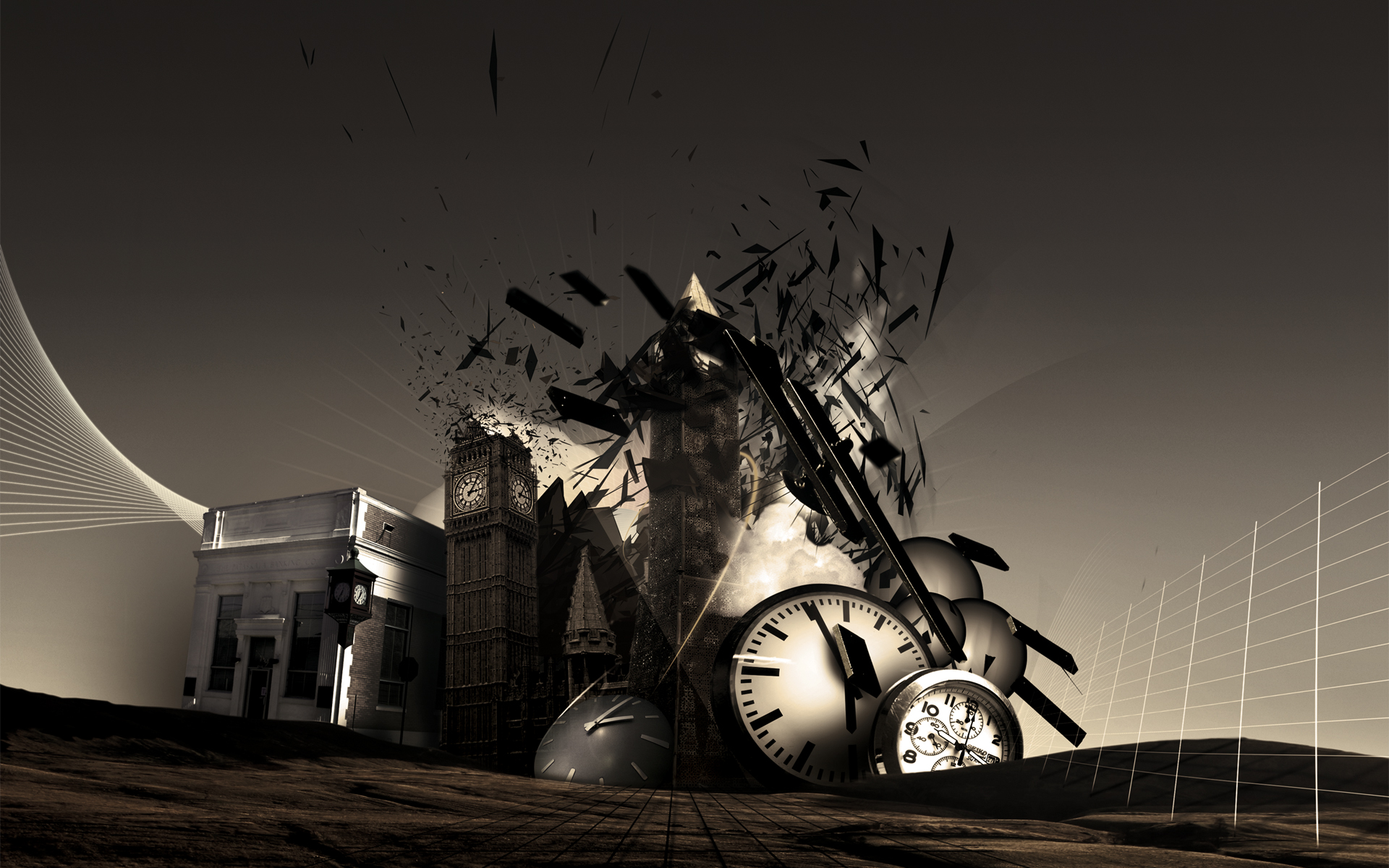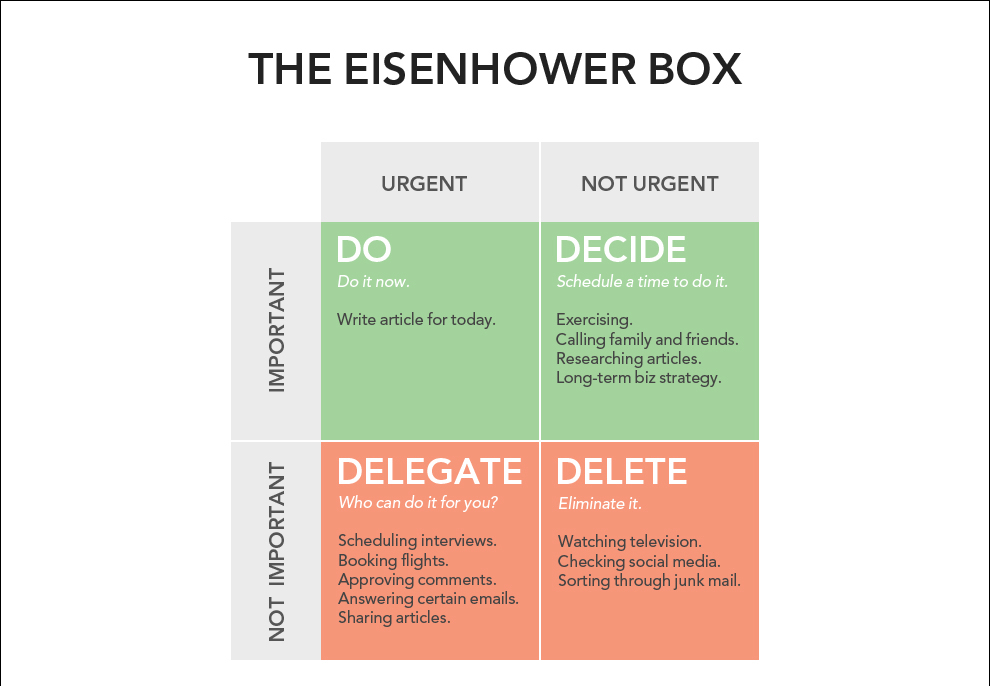
Time... Time... What is time? Is it what the Swiss produce? What the French save up, or what the Italians waste? While Americans say it's money, Hindus assume it never exists. I say it's a trickster. Beat The Devil (1953)
Although many things have been said throughout history to explain the importance of time, one of my favorites belongs to Tolstoy. He said, "The two most powerful warriors are patience and time."
On Time and Productivity…
No matter what formula we come up with for productivity, we see two things in the denominator: Time and labor…
While labor is something we can easily shape and manipulate as humans, we find ourselves helpless against time. No weapon can defeat it or even stop it. If we can't beat time, the strongest and untouchable element of the equation, then befriending it isn't a bad idea. After all, the ability to use time efficiently is one of the most important things that lead people to success in life.
How to Be More Productive Using the Eisenhower Matrix?
I'm one of those who think that time pressure makes smart brains more productive, although I don't know where we would be today if humans had thousands of years of life.
Dwight Eisenhower, who served as the 34th President of the United States from 1953 to 1961, is known to have lived one of the most productive lives we can imagine. He signed off on many important projects such as state expressways, the launch of the internet (DARPA), space research (NASA), and the peaceful use of alternative energy sources. It is said that Eisenhower's policies had a 'multiplier' effect on America's rapid economic growth.
Before becoming president, he served as the Supreme Allied Commander in Europe during World War II, planning and executing operations in North Africa, France, and Germany.
In his non-military career, he served as the President of Columbia University and managed to surprise everyone by mastering hobbies like golf and oil painting.
President Eisenhower had an incredible ability to sustain productivity not just for weeks or months, but for decades. Therefore, his methods in time management, task management, and productivity have been studied and researched by many.
His most famous productivity strategy is known as the Eisenhower matrix. It's a simple time management and decision-making tool that can be used in almost any situation. Let's talk about how Eisenhower's strategy works and the path to a more productive life.
The Eisenhower Matrix: How to Be More Productive?
Eisenhower's strategy for taking action or organizing your tasks is based on simple logic. You divide your actions into four possibilities using a decision matrix:
- Urgent and important (tasks you will do immediately).
- Important, but not urgent (tasks you will plan to do later).
- Urgent, but not important (tasks you will delegate).
- Neither urgent nor important (tasks to be eliminated).
The best part of this matrix is that it's a simple tool you can use when making broad plans like "how do I utilize my time" every week or daily decisions like "what should I do today."
Here's an example of what the Eisenhower Matrix might look like for today:

The Difference Between Urgent and Important
What is important is seldom urgent and what is urgent is seldom important.
-Dwight Eisenhower
Urgent tasks are things that make you feel like you need to react. Important tasks, on the other hand, can be elements that are part of your long-term mission or goals.
Separating these once may seem easy, but doing it consistently is not that simple. The reason I love the Eisenhower Method is that it provides a clear framework for making decisions over and over again...
It may seem like the foundation of this method is laziness, but it's not. This matrix, which enables you to make strong decisions, is a tool aimed at eliminating any task that does not serve your goals. When you find tasks that really need to be done or will support your long-term strategies without spending time, you can find the energy to perform that task in the best way possible.
It's clear that the Eisenhower matrix prompts questioning whether an action needs to be taken. It reminds us to move unnecessary tasks to the "Delete" area instead of dealing with them.
In summary, if you eliminate the things you do in vain every day, you won't have to make an effort to notice what's important and can be more productive.
Think About Why You Are Doing a Task!
If you're not sure what you're working for, it seems unlikely that you can eliminate activities that waste your time. In fact, when we look deeply, we see that there are a few hidden questions in the Eisenhower matrix that can help clarify the process:
- Why am I doing this?
- What am I moving towards?
- What are the fundamental values guiding my life?
The Eisenhower Matrix may not be a perfect strategy, but I see it as a useful decision-making tool for increasing my productivity and eliminating behaviors that waste mental energy.
Software Optimization and the Eisenhower Matrix
A few years ago, while reading something about software, I came across an interesting quote.
"There is no code faster than no code."
–Kevlin Henney
In other words, the fastest way to get something done is actually to eliminate it entirely. Being able to completely delete an insignificant task from your to-do list will save you more time than even doing it in the fastest possible way.
Considering the time it takes for a computer to read a code or for a visitor to find what they are looking for, not using codes and other elements at all if they are not really necessary, and providing functionality with the least possible things, isn't that the basis of what we call optimization?
The outputs of research on user experience also prove this. As people's perception and focus times have dropped to the 1-2 second range, drowning them in unnecessary details benefits no one. If you provide the expected functionality with a minimalist approach and shape the user experience by also taking support from aesthetic thought, you reach the pinnacle of software work.
Just like the football played by the Germans...
“Writing is seeing the future.” Paul Valéry


